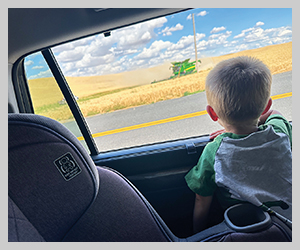
This year marks the 39th year since the inception of the Conservation Reserve Program (CRP), a proactive program administered through the unique partnership of the U.S. Department of Agriculture (USDA), the Natural Resources Conservation Service (NRCS), and landowners across the country. Some may have initially thought CRP and similar land-based rental programs would be short lived, instead, those programs have gained wide acceptance by landowners and operators and, in many cases, permanently changed the farm landscape.
At the onset of CRP’s establishment, the intended concentration was only on specific areas of the farm and aimed at sensitive locations with a high risk of erosion from water and wind. Over the decades, however, CRP has taken a more expansive approach to include signing up entire parcels of land.
The thoughtful landowner will always assess the potential positive and negative impacts of any lease encumbrance placed on the land, and with standard CRP lease terms requiring a 10 to 15 year enrollment, it certainly deserves that same assessment.
Impactful considerations for farmland owners and (CRP) include financial, environment, and economical.
Financial Impact. Assessing the economic viability of participating in the program is crucial for farmland owners.
Depending on the current production levels of the farmland, enrollment in CRP can often bring more consistent and increased levels of income per acre. This income often is not “weather dependent” nor impacted by variations in commodity markets.
Often the program includes incentives and “cost share” to assist in the implementation of certain specific conservation directives; a landowner should always calculate the full extent of how much it will cost to implement and maintain the conservation cover. Specifically, over the last five years, the inflation of input costs from seed, fertilizer, chemical, fuel, and labor warrant a thorough examination of the economic viability for enrolling in a conservation reserve program. The levels of expense are beginning to erode overall return in these programs.
Lastly, landowners must consider the impact on the overall market value of the property. When considering the disposition of any piece of farmland, sellers should remember that a CRP contract can narrow the pool of potential buyers. Furthermore, the return on investment (ROI) can be misconstrued at the time of sale, as a purchaser may look to the CRP rental income as opposed to the long-term crop production capability of the land.
Environmental Impact. By design, the most important reason to consider long-term enrollment of farmlands into CRP is the environmental benefit.
Practices like planting native grasses and trees, both of which are directives in certain CRP contracts, will help prevent soil erosion. Additionally, soil health and fertility can be maintained in a more natural way for current and future land use. Planting perennial vegetation along waterways, wetlands, or buffer zones can act as a natural filter to improve the overall quality in larger bodies of water above and/or beneath the surface. Land in CRP reintroduces natural habitat for wildlife. These habitats provide food, shelter, and breeding grounds for various species of animals and fowl and can contribute to the strengthening of their population numbers across the region.
Land Use Impact. Any modification to the use of farmland will have a local impact on the subject property and its neighbors. I’m reminded of lands that I have seen where the initial intent was to improve the natural ecosystem. However, over time and with changes in ownership, these lands have fallen into disrepair and, in some cases, have been abandoned to any crop production potential. While we can’t always influence what happens alongside us, we can make certain that any land under our direct supervision is cared for in a proper manner.
If you are considering enrolling or re-enrolling any of your lands into a conservation program, it is important to evaluate how enrollment may affect future land management decisions, including crop production, land values, and succession planning. Look further into the future than just the next 10 years as you consider what is best for you and your family’s land.
Tim Cobb is a farm kid from Eastern Washington and is the owner of Farmland Company, based in Spokane, Wash. Farmland Company specializes in direct farmland management, real estate brokerage, and consulting across the Pacific Northwest. For more information, visit the company’s website at farmlandcompany.com.












